
What's it Like at the Bottom of the Ocean?

R/V Atlantis
Image courtesy of Ridge2000
|
On January 10, 2007, the Research Vessel Atlantis left Manzanillo, Mexico,
sailing south for 2 days to reach a site in the East Pacific Ocean. The R/V Atlantis is the support ship for the manned submersible, Alvin. Scientists on board will spend the month of January diving to the seafloor in the submersible to study the volcanic eruptions and deep-sea life along the mid-ocean ridge system.
Last year (in May 2006), scientists found extensive fresh lava at this site, evidence of recent volcanic eruptions. Most of the animals that had been living near the deep sea vents at this site were no longer there. During this research cruise, scientists are investigating whether deep sea life has returned to this area since the eruptions.
During the cruise, researchers will observe and document changes at the study site on the ocean floor. Eric Simms, co-coordinator of the SEAS (Student Experiments at Sea)
education program, is aboard the
ship. He is sending virtual postcards from sea to Windows to the Universe, describing the experience of deep sea research.
Take a look at Eric’s postcards linked below. Check back often for new postcards!
|
 Greetings from the East Pacific Rise from Eric Simms, January 18, 2007
Greetings from the East Pacific Rise from Eric Simms, January 18, 2007
 Volcanoes of the Deep Sea from Eric Simms, January 24, 2007
Volcanoes of the Deep Sea from Eric Simms, January 24, 2007
 Houston, We Have a Phone Call! from Eric Simms, January 26, 2007
Houston, We Have a Phone Call! from Eric Simms, January 26, 2007
 Diving to the Deep from Eric Simms, February 1, 2007
Diving to the Deep from Eric Simms, February 1, 2007
Last modified January 29, 2007 by Lisa Gardiner.
You might also be interested in:
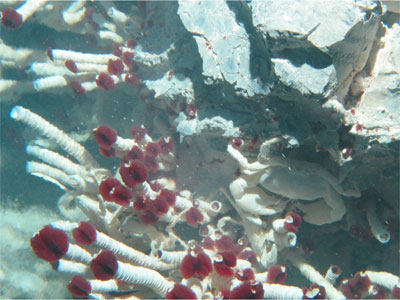
Hello again, from 9°50'N in the east Pacific Ocean (also known at the East Pacific Rise or EPR)! Did you know that deep beneath the surface of the ocean lies a mountain chain that stretches around the
...more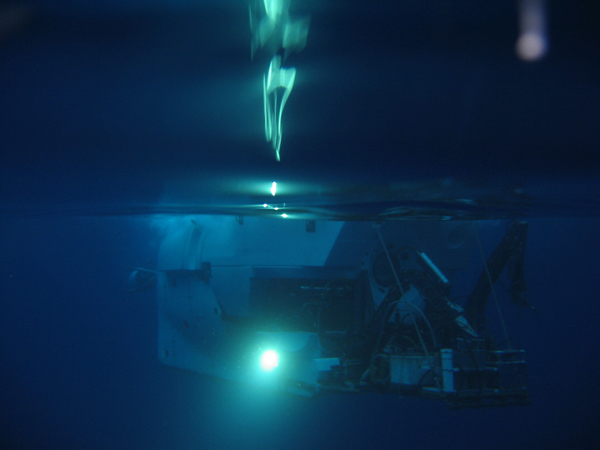
Greetings once again, from the East Pacific Rise! One of the most useful tools that scientists have for exploring the deep sea is the Alvin research submersible. Here's a postcard showing the submersible
...more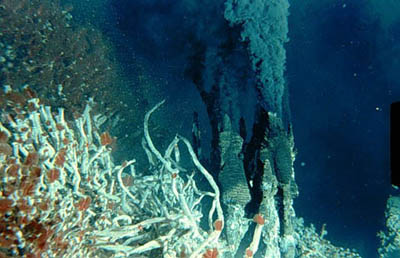
The deep ocean is very cold, under high pressure, and always dark because sunlight can not penetrate that far. The only light comes from bioluminescence – a chemical reaction inside the bodies of some
...more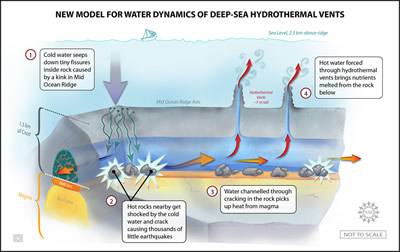
Zigzagging some 60,000 kilometers across the ocean floor, Earth's system of mid-ocean ridges plays a pivotal role in many workings of the planet: in plate-tectonic movements, heat flow from the interior,
...more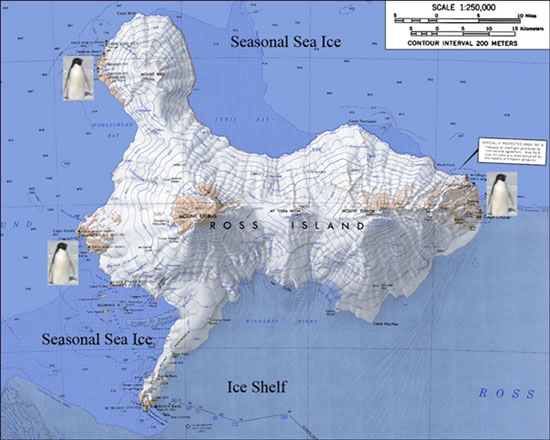
This is Ross Island, a volcanic island embedded in the Ross Ice Shelf, Antarctica. Adelie penguins are found all around Antarctica, but we will be filming the documentary at the breeding colonies shown
...more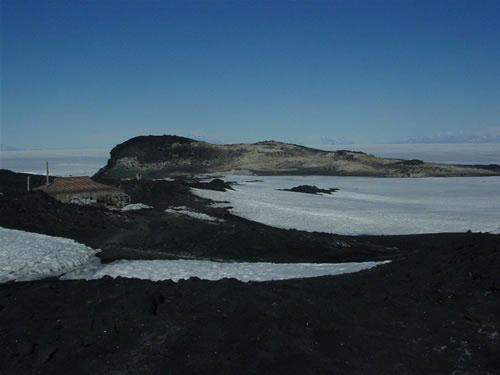
This is a view of the Adelie penguin breeding colony at Cape Royds in Antarctica. In the foreground you see Shackleton’s hut. Sir Ernest Shackleton and his team of explorers tried and failed to cross the
...more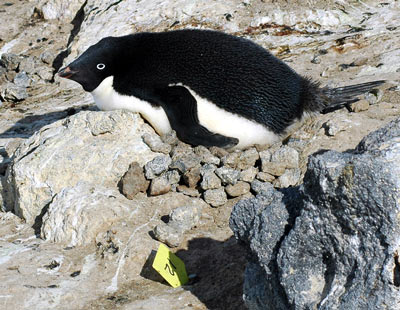
We are at Cape Royds, Ross Island, Antarctica, a penguin breeding colony of several thousand Adelie penguins. This female is 8 years old and has been a successful breeder in the past. She was first seen
...more

 Greetings from the East Pacific Rise from Eric Simms, January 18, 2007
Greetings from the East Pacific Rise from Eric Simms, January 18, 2007
 Volcanoes of the Deep Sea from Eric Simms, January 24, 2007
Volcanoes of the Deep Sea from Eric Simms, January 24, 2007
 Houston, We Have a Phone Call! from Eric Simms, January 26, 2007
Houston, We Have a Phone Call! from Eric Simms, January 26, 2007
 Diving to the Deep from Eric Simms, February 1, 2007
Diving to the Deep from Eric Simms, February 1, 2007















